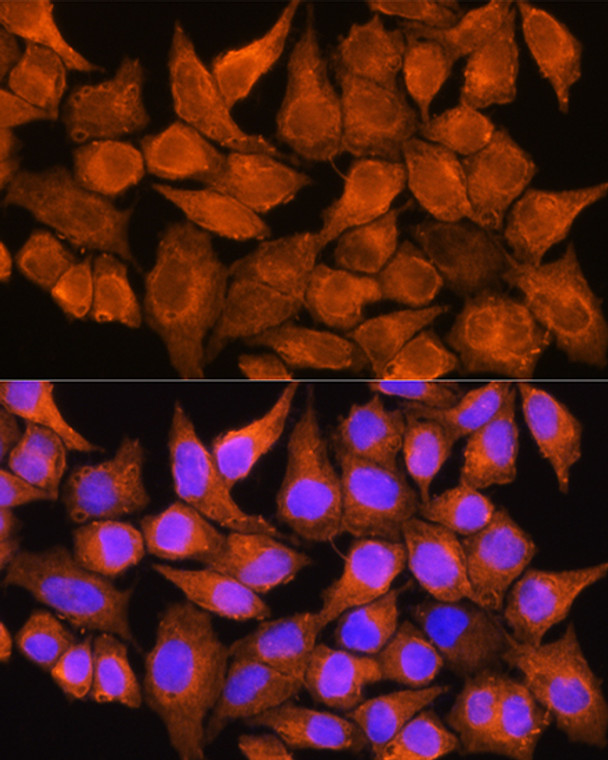| Host: |
Rabbit |
| Applications: |
WB/IF |
| Reactivity: |
Human/Mouse/Rat |
| Note: |
STRICTLY FOR FURTHER SCIENTIFIC RESEARCH USE ONLY (RUO). MUST NOT TO BE USED IN DIAGNOSTIC OR THERAPEUTIC APPLICATIONS. |
| Short Description: |
Rabbit polyclonal antibody anti-AOX1 (340-590) is suitable for use in Western Blot and Immunofluorescence research applications. |
| Clonality: |
Polyclonal |
| Conjugation: |
Unconjugated |
| Isotype: |
IgG |
| Formulation: |
PBS with 0.02% Sodium Azide, 50% Glycerol, pH7.3. |
| Purification: |
Affinity purification |
| Dilution Range: |
WB 1:500-1:2000IF/ICC 1:50-1:200 |
| Storage Instruction: |
Store at-20°C for up to 1 year from the date of receipt, and avoid repeat freeze-thaw cycles. |
| Gene Symbol: |
AOX1 |
| Gene ID: |
316 |
| Uniprot ID: |
AOXA_HUMAN |
| Immunogen Region: |
340-590 |
| Immunogen: |
Recombinant fusion protein containing a sequence corresponding to amino acids 340-590 of human AOX1 (NP_001150.3). |
| Immunogen Sequence: |
HLGTLAGSQIRNMASLGGHI ISRHPDSDLNPILAVGNCTL NLLSKEGKRQIPLNEQFLSK CPNADLKPQEILVSVNIPYS RKWEFVSAFRQAQRQENALA IVNSGMRVFFGEGDGIIREL CISYGGVGPATICAKNSCQK LIGRHWNEQMLDIACRLILN EVSLLGSAPGGKVEFKRTLI ISFLFKFYLEVSQILKKMDP VHYPSLADKYESALEDLHSK HHCSTLKYQNIGPKQHPED |
| Tissue Specificity | Abundant in liver, expressed in adipose tissue and at lower levels in lung, skeletal muscle, pancreas. In contrast to mice, no significant gender difference in AOX1 expression level (at protein level). |
| Function | Oxidase with broad substrate specificity, oxidizing aromatic azaheterocycles, such as N1-methylnicotinamide, N-methylphthalazinium and phthalazine, as well as aldehydes, such as benzaldehyde, retinal, pyridoxal, and vanillin. Plays a key role in the metabolism of xenobiotics and drugs containing aromatic azaheterocyclic substituents. Participates in the bioactivation of prodrugs such as famciclovir, catalyzing the oxidation step from 6-deoxypenciclovir to penciclovir, which is a potent antiviral agent. Is probably involved in the regulation of reactive oxygen species homeostasis. May be a prominent source of superoxide generation via the one-electron reduction of molecular oxygen. May also catalyze nitric oxide (NO) production via the reduction of nitrite to NO with NADH or aldehyde as electron donor. May play a role in adipogenesis. |
| Protein Name | Aldehyde OxidaseAldehyde Oxidase 1Azaheterocycle Hydroxylase |
| Database Links | Reactome: R-HSA-964975 |
| Cellular Localisation | Cytoplasm |
| Alternative Antibody Names | Anti-Aldehyde Oxidase antibodyAnti-Aldehyde Oxidase 1 antibodyAnti-Azaheterocycle Hydroxylase antibodyAnti-AOX1 antibodyAnti-AO antibody |
Information sourced from Uniprot.org
12 months for antibodies. 6 months for ELISA Kits. Please see website T&Cs for further guidance










